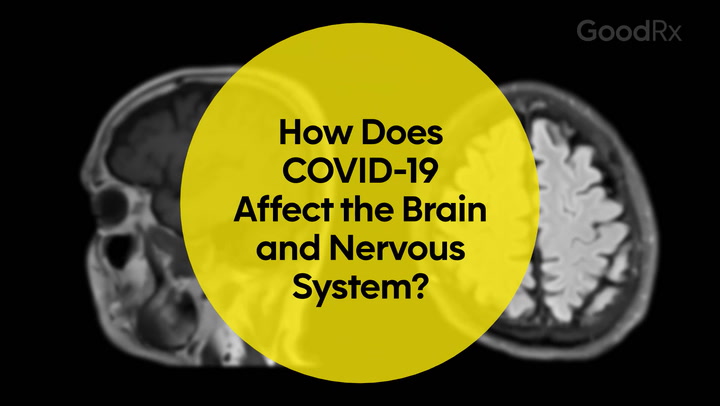
How to Recognize the 20 Symptoms of PTSD (and Get Help)
Key takeaways:
Traumatic experiences can lead to post-traumatic stress disorder (PTSD).
PTSD is a mental health condition with many different symptoms, including flashbacks, mood changes, and feeling on edge.
Treatment can help you recover from PTSD.

Accidents, natural disasters, and other upsetting events are an inevitable part of life. Many people will have at least one traumatic experience as an adult.
After an unsettling or frightening experience, it’s perfectly normal to feel stressed, afraid, or angry. Many people also have headaches, stomach aches, and trouble sleeping.
Most of the time, people feel better after a few weeks. But about 20% of people will go on to have post-traumatic stress disorder (PTSD), a mental health condition with ongoing trauma-related symptoms.
Prescription Savings Are Just the Beginning
See what other benefits you qualify for—from cashback cards to cheaper insurance.

Read on for more info about the different symptoms of PTSD, what it feels like to have PTSD, and how you can get help if needed.
Who is most likely to get PTSD?
Though not everyone exposed to trauma will get PTSD, it can happen in anyone. PTSD affects all ages and races. In the United States, about 7% to 8% of people will have PTSD in their lifetime.
You can get PTSD from any type of personal experience. This could mean:
Being directly involved in a traumatic experience
Hearing about something that happened to a friend, family member, or stranger
Seeing something upsetting on the news, internet, or social media
Being repeatedly exposed to trauma while at work
Experiencing trauma in your community
Examples of common traumatic experiences include:
Accidents
Injury and illness
Physical and sexual assault
Neglect and abuse
War
Natural disaster
Death
After experiencing trauma, certain groups of people are more likely to get PTSD. You have a higher risk for PTSD if you are:
A woman
Latino
Black
American Indian
You might also be more likely to get PTSD if you have an experience where you feel especially helpless, or are afraid that you (or another person) might die. You may also be more at risk for PTSD if you don’t have good social support after a traumatic event.
What does PTSD feel like?
PTSD feels different for everyone. This is partly because trauma is an individual experience. For example, a war veteran with PTSD may have different symptoms than someone who was physically assaulted.
PTSD also has lots of different symptoms — 20 in total. You only need to have six of these symptoms to be diagnosed with PTSD. This means two people could be diagnosed with PTSD, but each have a completely different combination of symptoms.
How do I know if I have PTSD?
To be diagnosed with PTSD, you must fit the following description:
You’ve experienced trauma.
You’ve had symptoms for at least one month.
Your symptoms interfere with your daily life.
Your symptoms aren’t caused by substance use.
Your symptoms aren’t caused by another medical problem.
You must also have at least six different PTSD symptoms.
What are the 20 symptoms of PTSD?
PTSD symptoms are divided into four categories:
1) Re-experiencing symptoms (1 or more needed for diagnosis)
a) Upsetting memories
b) Nightmares
c) Flashbacks
d) Emotional reaction when you encounter a reminder of the trauma
e) Physical reaction when you encounter a reminder of the trauma
2) Avoidance symptoms (1 or more needed for diagnosis)
a) Avoiding memories, thoughts, or feelings that remind you of the traumas
b) Avoiding people, places, or activities that remind you of the trauma
3) Changes in thinking and mood (2 or more needed for diagnosis)
a) Problems remembering part or all of the trauma
b) Negative thoughts about yourself, your future, or the world
c) Blaming yourself or others
d) Negative feelings like fear, guilt, or anger
e) Being less interested in your normal activities and hobbies
f) Feeling detached from other people
e) Having a hard time feeling happy, positive, or optimistic
4) Symptoms of feeling on edge (2 or more needed for diagnosis)
a) Feeling irritable, or having angry outbursts
b) Engaging in reckless or self-destructive behavior
c) Feeling tense or “on guard”
d) Being easily startled
e) Having trouble with concentration or memory
f) Having sleep problems
Are there different subtypes of PTSD?
Yes. PTSD has two subtypes. If you have a subtype, this means you have the usual PTSD symptoms — but also have one (or both) of the following:
1) PTSD with dissociation: People with this subtype have an extra PTSD symptom called “dissociation.” Dissociation is a state of mind where you feel disconnected from yourself, or out of touch with your surroundings.
People who dissociate sometimes feel like they are “watching” themselves from the outside, as if they were a character in a movie. Severe dissociation can also cause amnesia (memory loss), or problems interacting with others.
2) Delayed PTSD: People with this subtype don’t have full PTSD symptoms until at least 6 months after experiencing trauma. This happens in about 25% of people with PTSD.
What is complex PTSD?
In some cases, traumatic experiences can last for months, or even years. PTSD from this type of long-term trauma is sometimes called complex PTSD. Complex PTSD is recognized by the World Health Organization as a separate mental health condition.
In addition to the PTSD symptoms listed above, people with complex PTSD can also:
Have a hard time managing strong emotions
Have suicidal thoughts
Feel like “damaged goods”
Feel like are they are different from other people
Have strong feelings of helplessness, guilt, and failure
Struggle to maintain healthy relationships with others
Have many physical symptoms (somatization)
Is race-based traumatic stress the same as PTSD?
No. Race-based traumatic stress (RBTS) is a disorder where physical and mental symptoms are caused by experiencing and witnessing race-based trauma and discrimination. It is different from PTSD, even though many of the symptoms are similar.
Though not an official mental health diagnosis, many health professionals now recognize and treat RBTS.
What can trigger PTSD symptoms?
Some PTSD symptoms can be constant, like low mood and negative thoughts. But other symptoms can come and go — and can even be “triggered” by certain experiences.
Triggers can be anything that reminds you of the traumatic event. This can be something obvious, like experiencing a car accident and then hearing about one on the news. But triggers can also be more subtle, like a certain time of day, the quality of the air, or even a subtle smell or taste.
Common triggers include:
Smells
Sounds
Tastes
Images
Being touched
Certain locations
Certain situations
Words and phrases
Newspapers and social media
What can I do if I have symptoms of PTSD?
In many cases, PTSD is treatable. Treatments include medications, talk therapy, community support, and coping strategies.
Certain types of talk therapy are especially helpful for PTSD, including:
Cognitive processing therapy (CPT)
Eye movement desensitization and reprocessing (EMDR)
If you’re struggling with symptoms of PTSD, consider talking to your healthcare provider. Organizations like the National Center for PTSD and Sidran Institute also offer a wide variety of free resources, including educational materials, ideas for coping strategies, and even a free smartphone app. They can also help you find professional care — either for yourself, or a loved one.
The bottom line
PTSD is caused by trauma. Though PTSD can have many different symptoms, it is a treatable health condition. If you (or someone close to you) has experienced trauma, and you’re having ongoing symptoms, think about reaching out. Help is always available.
If you or someone you know is experiencing a mental health crisis, help is available. Call the National Suicide Prevention Hotline at 1-800-273-8255, or the Veterans Crisis Line (if you are veteran, or a friend of family member of a veteran). If you are experiencing a life-threatening emergency, call 911 or go to your nearest emergency room.
Why trust our experts?


References
American Psychiatric Association. (2020). What is posttraumatic stress disorder (PTSD)?
American Psychological Association. (n.d.). Trauma.
Anxiety & Depression Association of America. (n.d.). Support groups.
EMDR International Association. (n.d.). About EMDR therapy.
Familydoctor.org. (2020). Somatic symptom and related disorders.
ICD-11 for Morbidity and Mortality Statistics. (2022). 6B41 complex post traumatic stress disorder.
Mental Health America. (n.d.). Dissociation and dissociative disorders.
National Institute of Mental Health. (2019). Post-traumatic stress disorder.
National Suicide Prevention Lifeline. (n.d.). National suicide prevention lifeline.
Pai, A., et al. (2017). Posttraumatic stress disorder in the DSM-5: Controversy, change, and conceptual considerations. Behavioral Sciences.
Sidran Institute. (n.d.). For survivors and loved ones.
Sidran Institute. (n.d.). Sidran institute.
Sidran Institute. (2018). Traumatic stress disorder fact sheet.
Substance Abuse and Mental Health Services Administration. (2014). Exhibit 1.3 - 4DSM-5 diagnostic criteria for PTSD.
U.S. Department of Veterans Affairs. (n.d.). PTSD coach.
U.S. Department of Veterans Affairs. (2020). Complex PTSD.
U.S. Department of Veterans Affairs. (2020). PTSD and DSM-5.
U.S. Department of Veterans Affairs. (2022). Coping with traumatic stress reactions.
U.S. Department of Veterans Affairs. (2022). Find a provider.
U.S. Department of Veterans Affairs. (2022). How common is PTSD in adults?
U.S. Department of Veterans Affairs. (2022). PTSD: National center for PTSD.
U.S. Department of Veterans Affairs. (2022). Trauma reminders: Triggers.
Utzon-Frank, N., et al. (2014). Occurrence of delayed-onset post-traumatic stress disorder: A systematic review and meta-analysis of prospective studies. Scandinavian Journal of Work, Environment & Health.
Veterans Crisis Line. (n.d.). Veterans crisis line.
Wayne, T. (2016). The trauma of violent news on the internet. The New York Times.
For additional resources or to connect with mental health services in your area, call SAMHSA’s National Helpline at 1-800-662-4357. For immediate assistance, call the National Suicide Prevention Lifeline at 988, or text HOME to 741-741 to reach the Crisis Text Line.

























